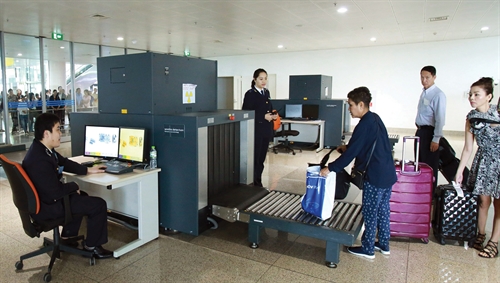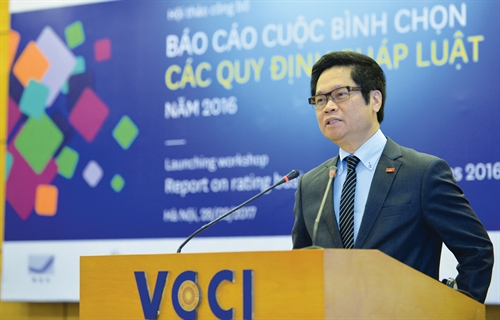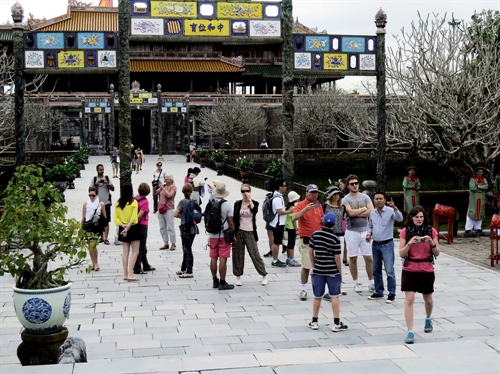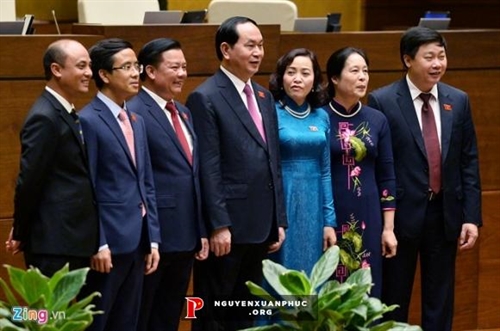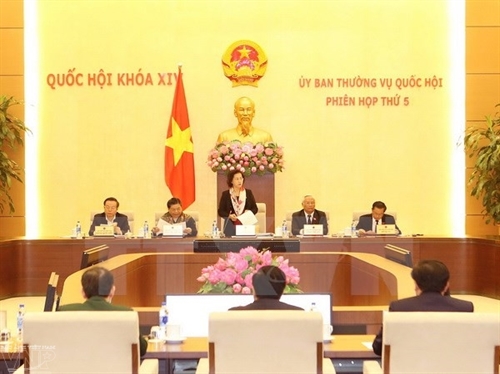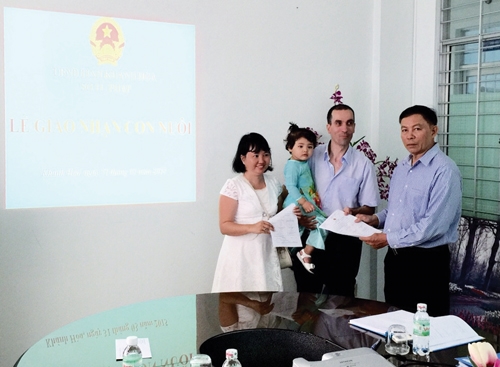Kieu Thi Thanh, LL.D
Senior Lecturer
Hanoi Law University
Vietnam has so far had three Civil Codes of 1995, 2005 and 2015 since January 4, 1995, when the Vietnamese Government filed a formal request for accession to the World Trade Organization (WTO). Each of these Civil Codes presents an interestingly different point of view on intellectual property (IP) in relation to the national system of IP rights protection, as briefly depicted below.
The 1995 Civil Code
In order to achieve WTO membership, one of the obligations of an acceding member is to make its laws and regulations comply with one of the Organization’s multilateral trade agreements, namely the Agreement on Trade-Related Aspects of Intellectual Property Rights (TRIPs Agreement).[1] Along with the General Agreement on Tariffs and Trade 1994 (GATT 1994) and General Agreement on Trade in Services (GATS), the TRIPs Agreement is often posited as one of the three main pillars[2] in “the family of the WTO Agreements”.[3] This should be one of the reasons that Vietnam’s first Civil Code, with provisions on intellectual property rights (IPRs) set forth in Part VI (Intellectual Property Rights and Technology Transfer), which are also for the first time different from those enacted in the centrally planned economy,[4] was passed on November 28, 1995. These IPRs provisions were, among other things, recognized as being referenced from the TRIPs Agreement.[5]
The 1995 Civil Code provides for six categories of IPRs, consisting of copyright (literally translated as “authors’ rights”) which contains related or neighboring rights (literally under the title “The Rights and Obligations of Performers, Organizations Producing Audio or Video Tapes and Disks, and Radio and Television Broadcasting Organizations), inventions, utility solutions, industrial designs, trademarks, and appellations of origin of goods. These are classified into two broader fields of copyright and industrial property rights.
In respect of copyright, the Code provides for the protection of various kinds of authors’ creations, including written works, lectures and speeches, theatrical works and other forms of artistic performance, cinematographic and video works, radio and television works, journalistic works, musical works, architectural works, photographic works, computer software, and so on.[6] The rights of authors and other copyright holders are divided into three types: those who are the authors and simultaneously the owners of works have the widest rights which are equivalent to the entire rights of the other two rights holders; those who are authors not concurrently owners of the works; and, those who are owners not simultaneously authors of the works.[7] The authors and other copyright holders have both personal and property rights.
In respect of industrial property rights, there are three criteria for granting patents for inventions, which are: (i) new compared to the technical level of the world; (ii) creative in character; and, (iii) capable of being applied in economic and social fields.[8] In comparison with inventions, only the same two criteria (i) and (iii) are applied, orderly re-arranged as (i) and (ii) respectively, to the grant of patents for utility solutions.[9] The owners of inventions, utility solutions, industrial designs, and trademarks are entitled to: (i) the exclusive right to use the protected subject matter of industrial property;[10] (ii) transfer the use of the protected subject matter to another person;[11] and, (iii) request the authorized state body to compel any person who has violated their rights to cease the violation and to compensate for any damage.[12] The person who is entitled to use an appellation of origin of goods is given the right to use the appellation for his or her products[13] and request the authorized state body to compel any person who unlawfully uses the appellation to cease such unlawful use and to compensate for any damage.[14]
These provisions are further detailed by governmental and ministerial regulations in accordance with the practices of Vietnam’s legality. These regulations include Government Decree 63/CP of October 24, 1996, on industrial property and Decree 76/CP of November 29, 1996, on copyright, to name but a few.
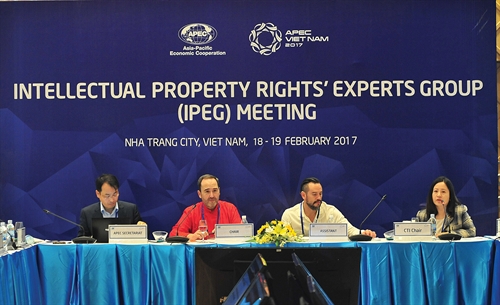 |
| Intellectual Property Experts Group Meeting held on February 18 in Nha Trang city (Khanh Hoa province) within the framework of APEC (SOM 1)__Photo: Nguyen Khang/VNA |
As such, in the 12 years of Vietnam’s accession to the WTO (04/01/1995 - 11/01/2007), the 1995 Civil Code’s provisions on IPRs could completely be seen belonging to the warming-up period for the implementation of the TRIPs Agreement in Vietnam. However, by that time, IPRs remained a novel issue to Vietnamese policy and lawmakers and to the Vietnamese society as a whole.[15] Vietnam’s relevant legislation in the Code was almost inconsistent with the TRIPs Agreement. The Ministry of Science and Technology of Vietnam in 2002 concluded that it was ‘inadequate and ineffective’ and ‘far from in compliance with the TRIPs Agreement’.[16]
In respect of copyright and related rights, for example, the local law was stated to have, among other shortcomings, no detailed regulations for the protection of computer programs, no provisions for the protection of compilations of data, and no provisions for the length of a term of the protection for related rights of performers, producers of phonograms, and broadcasting organizations.[17] Similarly, in respect of industrial property rights, not only the scope of trademark protection was narrower than that provided in TRIPs[18] but the Code was also found having almost no provisions for well-known marks required by the Agreement.[19] There were also many other local restrictions such as geographical indication protection covered appellations of origin only so that not all geographical indications, like symbols of a country or locality from which the goods originated, could be protected[20], or the lack of detailed provisions for patenting microorganisms including examination and deposit procedures[21] and the absence of protection for layout designs and undisclosed information.[22]
This situation gradually led to the revision of the 1995 Civil Code and the enactment of the IP Law in Vietnam, both in 2005. This went along with the revision of the latter four years later (2009). There are a great number of governmental degrees and ministerial circulars guiding the implementation of the two Codes and Law.
The 2005 Civil Code and the IP Law
Vietnamese policy and law makers were challenged in creating and adopting the IP Law. Many problems did have to be overcome. These included the translation of the TRIPs Agreement’s provisions from English into Vietnamese dealing with the ambiguities of both languages, the lack of experience and expertise amongst policy advisers and legislative drafters, and the lawmakers’ lack of knowledge and experience of business and IP produced by Vietnam’s cultural background and its economic situation as both a developing and a transitional economy.[23]
In November 2004 the Ministry of Science and Technology accepted responsibility for drafting the IP Law in cooperation with the Ministry of Culture and Information (now the Ministry of Culture, Sports, and Tourism) and the Ministry of Agriculture and Rural Development.[24] The number of unofficial drafts of the law ran into the hundreds with the work mainly done by the officials of the National Office of Intellectual Property (NOIP) who consulted relevant laws and received advice from officials in highly industrialized countries including the United States, Switzerland, and Japan, and from international organizations including WTO, WHO, ECAP, and Oxfam[25] before the final draft was approved on November 29, 2005, five months after the amendments to the 1995 Civil Code adopted on June 14, 2005.
These new 2005 Civil Code and IP Law form a complete and uniform legal system on IP in Vietnam complying with the TRIPs Agreement’s requirements and standards that the report made by the Working Party for the Accession of Vietnam to the WTO envisaged almost no impediment in the IP legislation to Vietnam’s accession.[26]
There is certainly a relationship between the 2005 Civil Code and the IP Law. This is indicated in the latter that if there are IP-related civil matters in existence but not provided for in it, the provisions of the former are to be applied[27] and that where there is a difference between its provisions and other laws, its provisions are to prevail.[28]
There is also a substantial difference between the 1995 Civil Code and the 2005 Civil Code relating to their provisions on IP. Relatively specific provisions on IPRs in the former could have been seen necessary in the first period of acceding to the WTO and implementing the TRIPs Agreement in Vietnam. Meanwhile, there seemed having no need to detail more the corresponding subject matters in the latter once the IP Law was mostly concurrently enacted. Therefore, in the 2005 Civil Code, IP provisions are often very generally and shortly worded in a legal system that a civil code has a higher effect than other laws but the Constitution.
To compare, for example, there are up to 61 articles on IP in Part VI (Intellectual Property Rights and Technology Transfer) of the 1995 Civil Code (Articles 745-805) but the number is just 18 in the same Part VI under the same title in the 2005 Civil Code (Articles 736-753). Another example is that whilst the former covers almost all relevant subject matters, from protectable objects and protected rights to certain exceptions or exemptions of IPRs infringement and the terms of protection, the latter only contains such most fundamental provisions and mention and divide them into copyright including related rights in one chapter (Chapter XXXIV: Articles 736-749) and industrial property rights and rights to plant varieties in the other (Chapter XXXV: Articles 750-753).
Given to that landscape, it seems to have more developed when the 2015 Civil Code has almost no IP provisions. This apparently leaves all to be provided for by the IP Law as described below.
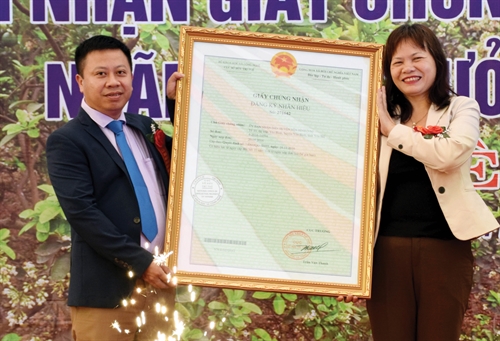 |
| A representative of the National Office of Intellectual Property hands over the certificate of Dai Minh grapefruit brand to an official of the People’s Committee of Yen Binh district, Yen Bai province__Photo: The Duyet/VNA |
The 2015 Civil Code and the 2005 IP Law as revised in 2009
At first sight, there is a considerable amendment to the 2015 Civil Code in comparison with the two older ones. The former contains six parts with 689 articles in totality if being compared with the latter that both are bigger with respectively 838 and 777 articles divided into seven parts. The two latter are also both organized with Part VI under the same title “Intellectual Property Rights and Technology Transfer” in comparison with the 2015 one as having been built with no this at all.
Further, there are only four articles mentioning some about IP in the 2015 Civil Code[29] to compare with the two older ones that on the same subject matter the number of the articles are 61 in the 1995 Civil Code and 18 in the 2005 Civil Code, as noted earlier.
Particularly, in the 2015 Civil Code the first provision on IP is Article 8(4). Here, the outcome of creation of objects of IPRs is referred to as one of the bases for establishing civil rights.[30]
Then, it is set out in Article 115 of the 2015 Civil Code that defines property rights as rights that can be valued in terms of money, including those subject to IPRs, land use right, and other property rights.[31]
Next, similar to Article 8(4) as mentioned above, it is indicated in Article 221(1) that creation of objects of IPRs is one of the bases for establishment of ownership rights.
Lastly, in the second sentence of Article 222, the 2015 Civil Code states that those who carry out creative activities are entitled to own the property gained from such activities as provided for in the IP Law.
As such, there is actually a very general and short wording on IP in the 2015 Civil Code since its details are referenced to the IP Law. There has been a very great deal of regulations for implementing the Law issued by the Government and relevant ministries until recently.
On June 19, 2009, the XIIth National Assembly at its fifth session passed the Law Amending a Number of Articles of the Intellectual Property Law. Thirty three of the 222 articles of the 2005 IP Law have been amended and supplemented.[32] Some of the already-adopted implementing regulations have been replaced or revised and continue to be newly created in accordance with this amendment and supplementation as a result. Below are some regulations that have been newly or very recently enacted:
- Culture, Sports and Tourism Ministry Joint Circular 07/2012/TTLT-BTTTT-BVHTTDL of June 19, 2012, on liabilities of intermediary services providers in the protection of copyright and related rights relating to the Internet and telecommunications network;
- Agriculture and Rural Development Ministry Circular 16/2013/TT-BNNPTNT of February 28, 2013, on protection of plant varieties;
- Finance Ministry Circular 13/2015/TT-BTC of January 30, 2015, on inspection, supervision, temporary suspension of customs procedures for exported and imported goods subject to IP protection and controlling counterfeit goods and goods infringing IPRs;
- Joint Circular 14/2016/TTLT-BTTTT-BKHCN of June 8, 2016, on steps and procedures for changing and revoking domain names violating IPRs; and,
- Finance Ministry Circular 263/2016/TT-BTC of November 14, 2016, replacing Circular 22/2009/TT-BTC on industrial property charges and fees.
In conclusion, it is clear that there is currently a very more focus on IP from the new system of the Civil Code and the IP Law in Vietnam. This must have been taken suitably not solely to Article 4(1) of the 2015 Civil Code which describes itself as a general law for regulating civil relations but also to a common trend from many other countries in the world where a legal act on IP or on each category of IP such as copyright, patents, trademarks, designs, and the like, is often preferable.-
